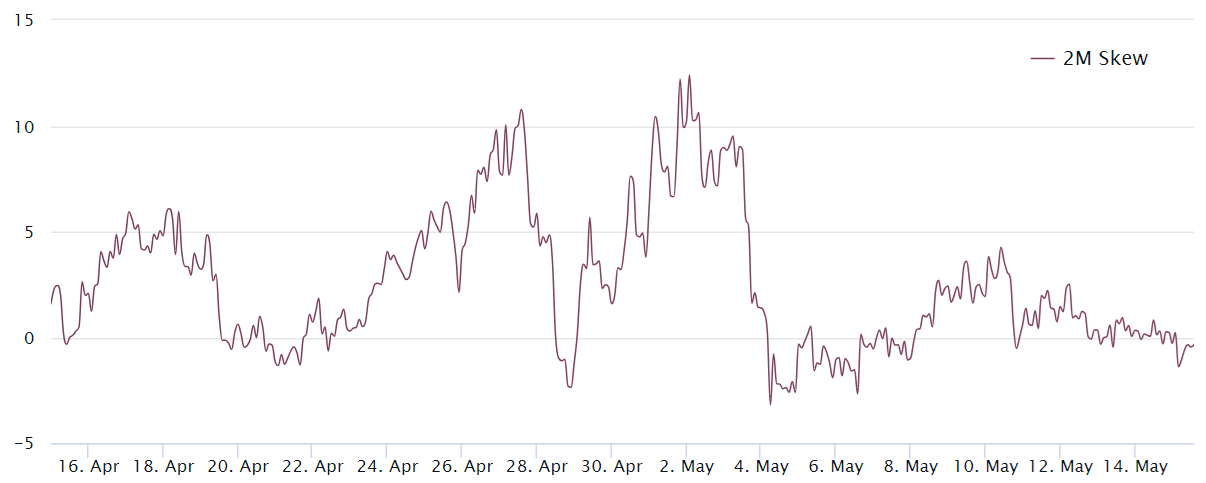
On May 15, cryptocurrency markets saw a 5.5% increase in total capitalization following the release of inflation and retail sales data from the United States. However, Ethereum (ETH) failed to take full advantage of this bullish momentum. Ethereum last closed above $3,000 over a five-day period and has underperformed the leading cryptocurrency, Bitcoin (BTC), by 22% since the start of 2024.
US macroeconomic data supports the rally in some scarce assets
Cryptocurrency markets responded positively to US Consumer Price Index (CPI) data that showed a 3.4% year-on-year rise in April, which was in line with market expectations. However, retail sales data for April, released on May 15, worried investors because it indicated stability compared to the previous month, contrary to economists’ expectations of a 0.4% increase. This development has increased the likelihood that the US Federal Reserve will implement measures to stimulate the economy.
Even if the US Federal Reserve decides to keep interest rates above 5.25% for an extended period to control inflation, the central bank may resort to measures such as purchasing government securities to boost the money supply and lower the discount rate at which banks borrow from the central bank. Bank. Essentially, even the hint of continued liquidity provision can shape economic expectations and behaviour.
Contrary to what might be expected, weaker economic activity is often seen as an indicator that more money will be pumped into the system, which benefits investments in scarce assets such as stocks, gold and cryptocurrencies. Ultimately, the government will need to issue more debt to finance these expansionary measures aimed at preventing an economic recession. Over time, inflation will likely rise because of the additional money in circulation, regardless of the interest rate.
Some analysts believe that the upcoming decision by the US Securities and Exchange Commission (SEC) on May 23 regarding VanEck’s implementation of the Ethereum spot ETF is a major reason why Ethereum will not be able to cross the $3,000 resistance level. The uncertainty surrounding this event causes traders to postpone their investment decisions until the outcome becomes more certain, which makes sense. No matter how optimistic one is about Ethereum’s long-term prospects, the SEC’s rejection could lead to a short-term market correction.
Eric Balchunas, a senior ETF analyst at Bloomberg, expressed doubts about the approval of an Ethereum spot ETF in 2024, given the regulator’s cautious approach to products that might be classified as securities, particularly those involving services. Local staking. These uncertainties are also evident in ether derivatives markets.
Ether derivatives markets reflect a lack of optimism
To understand how professional traders position themselves, it is necessary to examine the futures and options markets for ETH. In neutral market conditions, Ethereum futures are typically priced 5% to 10% above regular Ethereum spot prices to account for the extended settlement period.
Currently, the Ethereum futures premium (base price) is 9%, a number that has remained stable over the past two weeks. This level indicates a general lack of enthusiasm about the decision on spot ETFs, suggesting a neutral sentiment among traders.
In the options market, there is an equal balance of demand for call (buy) and put (sell) options, as both types of instruments trade at similar price levels. Typically, if traders expect a decline in Ethereum prices, the 25% delta deviation measure will exceed 7%. Conversely, periods of high market excitement often result in a negative skew of 7%.
Related: Two Brothers Manipulated Ethereum Protocols to Steal $25 Million – Department of Justice

If there is increased demand for bullish trades in anticipation of an immediate ETF decision, whales and market makers will likely raise the prices of contracts that provide upside price protection. This would reflect their expectations of higher prices in the future and their intention to take advantage of traders’ willingness to pay more for potential gains.
Although it is difficult to pinpoint the exact reasons why Ethereum has been unable to capitalize on today’s gains in the cryptocurrency sector, Ethereum investors do not appear particularly optimistic about the chances of an Ethereum ETF being approved. Additionally, other factors, such as ETH supply becoming inflated for the first time in 18 months, due to lower transaction fees, may also contribute to keeping ETH prices below $3,000.
This article does not contain investment advice or recommendations. Every investment and trading move involves risks, and readers should conduct their own research when making a decision.